Faces of the Missing: Many Native Americans Remain ‘Lost’; Murders Are Unsolved Mysteries

Jemini Posey, now 22, went missing from her home on Jan. 7. On March 8, 28-year-old Isaac Hunt– the brother of Posey’s boyfriend, D’Angelo Hunt– was reported missing. Authorities have not said the two cases are linked, according to a Grand Forks Herald report.
The tribe marked the first anniversary of Posey’s disappearance on Jan. 7– and Hunt’s 28th birthday on Jan. 6– with a Facebook post increasing the reward for information to $20,000.
Following the second disappearance, the tribe declared a state of emergency and created an Incident Command System (ICS) team of tribal members and local law enforcement officers, Indian Country Today reported.
Law enforcement agencies, family and other volunteers searched several areas. The effort included aerial drones to scan a wider area. Horseback patrols searched rough terrain.
As of the writing of this article, both remain missing.

An American Tragedy
One of the most distressing tragedies in America is the large number of people who go missing each year. Another is the number of homicides– 17,713 in 2023, Statista reported in September 2024.
This may seem minor because it involves “only” thousands in a country of millions. One demographic group feels this curse more deeply because they are only a small part of the whole. These are the Native, or Indigenous, Americans.
Most have seen statistics on Missing and Murdered Indigenous People in news reports. The Daily Muck reported on the topic in a Dec. 11 article. Here are a few more statistics.
People identifying as American Indian/Alaska Native-only totaled almost 4.4 million out of a national population of over 333 million (about 1.3 percent), according to a 2022 update to the 2020 Census. Those who identified as a mix with another race increased that total to almost 7.3 million (2.2 percent).
As of January 2024, 3.5 percent of missing persons on the National Missing and Unidentified Persons System (NAMUS) were Indigenous people – 840 of almost 24,000. Alaska accounted for 321 Indigenous missing persons cases, NAMUS reported.
Deny ‘Predators a Place to Prey’
The murder rate for Native Americans is significantly higher than the national average. Indigenous Americans’ homicide rate was four times higher than that of non-Hispanic Whites in 2021, according to CDC estimates.
U.S. Rep. Tom Cole (R-Okla.), a member of the Chickasaw Tribe, told a House committee in November that “Native women and girls experience a murder rate 10 times higher than the national average.”
Cole said Oklahoma trails only Alaska in the number of missing Indigenous individuals, with 86 cases in the NAMUS report. Arizona is third with 83.
“While these statistics are alarming, data collection is unfortunately still lacking, and it will require sufficient awareness and resources to solve this crisis once and for all,” Cole continued. “I have supported and co-sponsored several bills aimed at increasing data collection, record keeping, and reporting, including the Savanna’s Act and Not Invisible Act — both of which were signed into law in 2020.”
Cole said the “crisis won’t be solved without the work and partnership of leaders of the federal, state, tribal, and local law enforcement. To put it into perspective I use the phrase: ‘Fishermen know where to fish, hunters know where to hunt, predators know where to prey.’
“We can’t give predators a place to prey anywhere, but especially in Indian Country,” the congressman added.

A Few Examples of a National Crisis
It is impossible to address all cases in one article. Daily Muck has selected a few cases as examples of this national crisis. The cases in this article are from the Great Plains area, Minnesota, the Dakotas and Montana.
The issue is just as serious in the West, South and East regions. It is a national tragedy requiring a nationwide effort to address.
In a perfect world, this kind of article might help a missing individual return home or aid in uncovering information that could solve a murder. Unfortunately, this world is far from perfect. All anyone can hope to do is try.
Following are a few cases that put faces to a tragedy often reduced to disturbing statistics.
Jemini Posey, Isaac Hunt: Spirit Lake Reservation, N.D.
The double disappearance at Spirit Lake brought back painful memories for the tribe, the Indian Leader newspaper noted in a February 2024 article. In 2017, 21-year-old Savanna Greywind went missing. Nine days later, her murdered body was found in North Dakota’s Red River. Her unborn baby had been cut out of her womb, the article noted.
That case led to the passing of “Savanna’s Act.” The law addressed jurisdictional problems between tribal sovereignty and non-tribal law enforcement agencies.
Posey went to her mother’s house in Devils Lake on Jan. 3., according to Disappeared Blog. She returned to her Fort Totten apartment soon after. On Jan. 7, she told D’Angelo Hunt she was going out with a friend. She left their 7-month-old baby with him.
Hunt said he was playing video games and did not see who picked Posey up. Her mother filed a missing person report on Jan. 11 after nobody had heard from her since Jan. 7. Her family said she would not leave without calling someone.
Posey is mixed Caucasian/American Indian, 4’7–4’8 tall and 120–125 pounds. She has blonde hair, hazel eyes, a scar on her forehead and tattoos of an infinity symbol on her right ankle and “I-XIII-MMXX” on her right collarbone.
She wears eyeglasses but was not wearing them when she went missing. She was last seen wearing a yellow Nike sweater.
Anyone with information about Posey should contact the Fort Totten Police Department at (701) 766-4231, Devils Lake Police Department at (701) 662-0700 or the FBI tip line at (800) 225-5324.
Isaac Hunt was last seen getting into a brown Chevy Tahoe after leaving his father’s house in Saint Michael, N.D., on March 8, 2024, the Disappeared Blog website reported.
He has tattoos of an Ace of Spades on the right side of his neck and a Superman symbol on the left. He has “Angelita” tattooed on his right forearm and “Adam” on his left.
Hunt is Native American with black hair, brown eyes and a scar above his lip. He is 5’9 tall and weighs 180 pounds.
Anyone with information on Hunt’s case should call Fort Totten P.D.
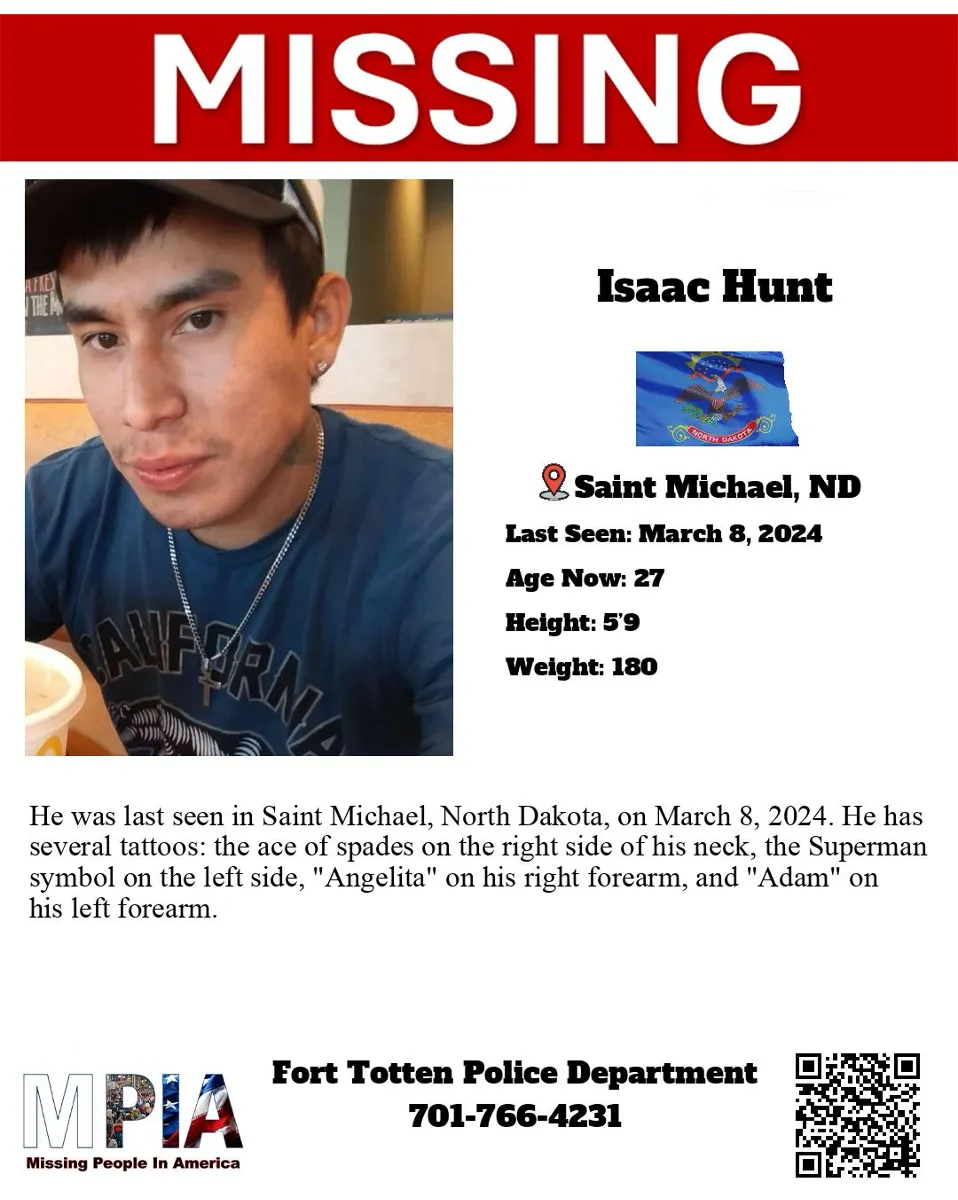
Nevaeh Kingbird, Red Lake Reservation, Minn.
Nevaeh Kingbird, a petite 15-year-old with the unlikely nickname “Tank,” went missing in the early morning of Oct. 22, 2021.
Her mother came home from work to find her and several other intoxicated teens in the house in Bemidji, Minn. After a confrontation with one of the teens, she went to her car to call 911. Neveah and her cousin slipped out the back door before police arrived, Disappeared Blog reported in a case summary.
Kingbird, who turned 18 in August, is a member of the Leech Lake Band of Ojibwe of the Minnesota Chippewa Tribe and speaks both English and the Ojibwe language.
Kingbird and the other girl went to another juvenile’s trailer. That youth’s father told them to go home. Neveah reportedly jumped out the window, fell and hit her head before running off. She left her phone in the trailer.
There has been no activity on Kingbird’s phone or social media since she disappeared. Her parents reported her as a runaway. They became worried after she did not contact family or friends, the blog site stated.
Disappeared Blog reported two of Kingbird’s friends had recently committed suicide. She was grieving and also had bipolar disorder that caused manic episodes.
She was 5’4” tall and weighed 120 pounds when she went missing. She had long brown hair with blonde highlights on one side, brown eyes, a scar near her left eyebrow and pierced ears. She was wearing a white undershirt, black zip-up hoodie or red sweatshirt with the Chicago Bulls logo, blue skinny jeans and black-and-red Nike slide sandals.
Anyone with information should contact the Bemidji Police Department at (218) 333-9111.

Shacaiah Harding, Northern Cheyenne, Mont.
In cases of missing persons, the passing of time intensifies– not diminishes– feelings of loss, despair and fear.
Such is the case for family and friends of Shacaiah “Blue” Harding. She was last seen walking on Buena Vista Drive in Billings, Mont., at 4 p.m. on July 23, 2018. A Yellowstone County Sheriff’s Office flyer states she had visited the nonprofit Tumbleweed Runaway Center, which provides services to runaways and homeless youths.
She has black hair, brown eyes, stands 5’4” and weighs 125 pounds. She has pierced ears. She was 19 when she went missing.
Harding had been living on the streets in Billings “off and on for most of the spring and summer, and behaved erratically, but did keep in touch with her family,” the Charley Project states on its website.
Her mother reported her missing on Aug. 20, 2018, “after the family realized no one had seen or heard from Harding in almost a month.”
Harding has ties to Billings and Fort Belknap, Minn., New Mexico and Fort Riley, Kansas. There are concerns that “she may have been the victim of human trafficking,” the Charley Project post said.
Harding’s was one of several cases featured in the Emmy-winning three-part docuseries Murder in Big Horn, released in 2023. The series notes that acquaintances of hers said she had been sold for drugs.
Anyone with information on this case should call the Yellowstone County Sheriff’s Office at 406-256-2929.
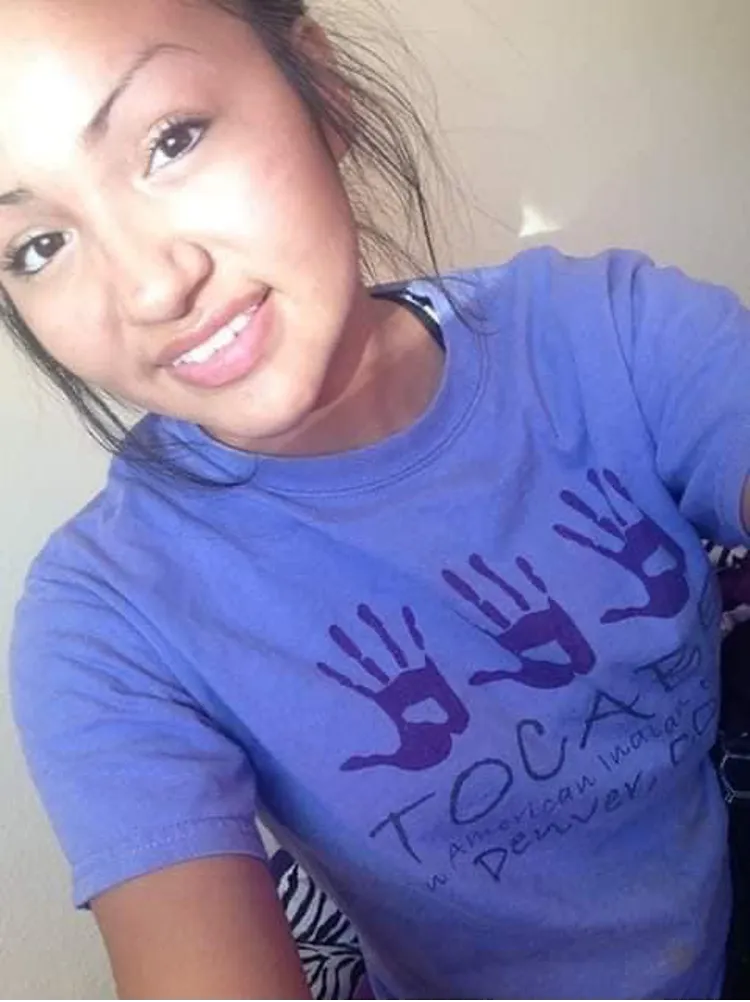
Michelle Jade Elbow Shield, Pine Ridge Oglala Sioux, S.D.
Michelle Jade “Shelly” Elbow Shield was 26 when she went missing in October 2023. She is 27 now. She was last seen in Rapid City, S.D.
The Charley Project site said she is 4’10” tall, weighs 90-100 pounds, has brown hair and brown eyes. Tattoos include a butterfly on her left ankle, an infinity symbol with the names “Michelle and Cody Red Wing” on her left arm and a heart with devil horns behind her right ear. She has pierced ears. She was last seen wearing a blue, gray and black sweater and black jeans.
Rapid City Police and BIA’s Missing and Murdered Unit asks anyone with information to text tips to 847411 or email ojs_mmu@bia.gov. They can also call 1-833-560-2065, 605-394-4131 or the Pine Ridge Oglala Sioux Tribal Police Department at 605-867-5111.
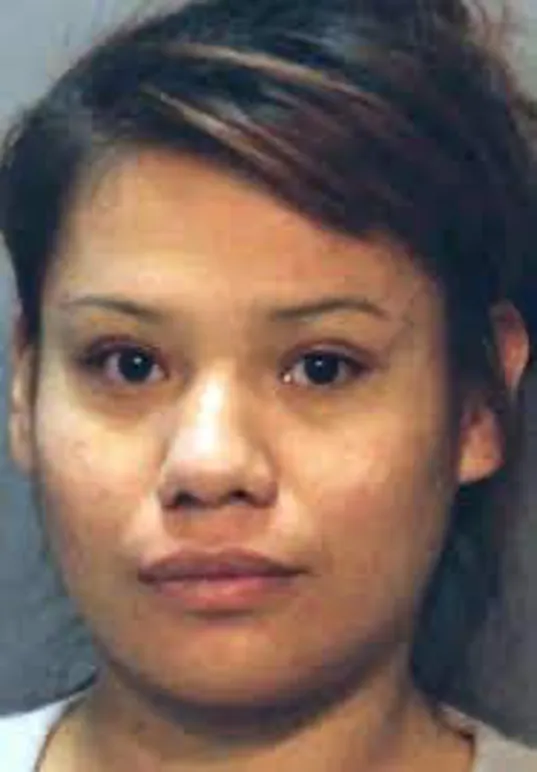
Arden Pepion, 3-Year-Old, Blackfeet Reservation, Mont.
Anyone with a toddler in the house might want to skip reading this section. It is every parent’s nightmare, made worse because the question nobody wants to ask cannot be answered.
Arden Pepion was a 3-year-old in the care of her uncle and his girlfriend on the Blackfeet Reservation near Browning, Mont., on April 22, 2021. She walked away and has not been found.
A 10-day search “only found footprints leading to the river and a boot believed to be Pepion’s,” Helena TV station KTVH reported.
After three years, the child will look considerably different. She has brown hair and hazel eyes.
The National Center for Missing and Exploited Children (NCMEC) marked the anniversary of her disappearance with a Facebook post. The poster has a 2021 photo and an age-enhanced photo by a forensic artist depicting what she may look like now.
The NCMEC said, “More than 150 members of the Blackfeet Reservation community joined the search for her. Despite extensive search efforts, there was no sign of Arden.”
“It has been hard to move on without closure,” Arden’s godmother, Diana Burd, told the agency. “As long as we think we can find Arden, we will continue to search for her and work on finding resources to help us.”
The uncle, HaHaax Vielle, pled guilty to negligent endangerment in the case, according to Associated Press reporting on Oct. 27, 20021. He was sentenced to nine months of house arrest and fined $500. Prosecutors dismissed a charge of child neglect.
Those with information about this case should contact NCMEC at 1-800-843-5678 (1-800-THE-LOST) or the Blackfeet Tribal Police Department at 1-406-338-4000.

Olivia Lone Bear: An Unsolved Mystery in New Town, N.D.
Some families worry and wait for only a short time before hearing the tragic news that their loved one is dead. Others replace that worry with a yearning for justice, for someone to pay for taking a life.
One example is the death of Olivia Lone Bear, who went missing in New Town, N.D., on Oct. 24, 2017. Her body was found in a submerged vehicle in Lake Sakakawea on July 31, 2018, according to an FBI alert. The FBI is offering up to $10,000 reward for “verifiable information identifying the individual(s) responsible for the disappearance and possible murder of Olivia Lone Bear.”
The death remains unsolved, but family members continue to keep the quest for justice and answers alive.
FBI spokesman Terry W. Van Horn told Daily Muck the bureau appreciates the media’s “efforts reporting on MMIP cases.” Van Horn is the FBI’s Savanna’s Act law enforcement coordinator for North Dakota.
“My primary responsibility is to assist with locating and safely returning missing Native Americans,” Van Horn said. “MMIP cases are high on my priorities list.”
Van Horn said the Lone Bear case “is a priority of the U.S. Attorney’s Office and the FBI, and it remains an active investigation.” He said there is no new information that might shed light on what happened to Lone Bear that night.
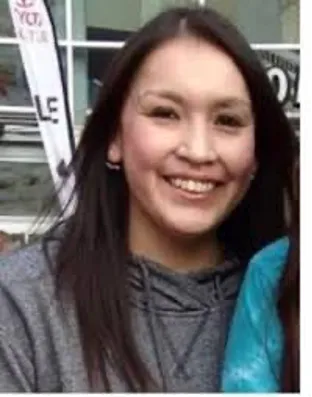
Volunteer Finds Lone Bear’s Body
The FBI made its last official press release on this case in November 2019.
The FBI said the 32-year-old mother of five was reported missing on Oct. 27, 2017, by her father, Harley “Tex” Lone Bear. Local and tribal law enforcement agencies investigated the disappearance. The FBI was invited to support the investigation in November 2017.
In July 2018, Lissa Yellowbird-Chase used a small boat equipped with a sonar to search Lake Sakakawea, the FBI press release reported. Her search revealed the submerged vehicle that contained Olivia Lone Bear’s body.
Yellowbird is the founder of the Sahnish Scouts, a group dedicated to searching for missing people in North Dakota’s Indian and oil country.
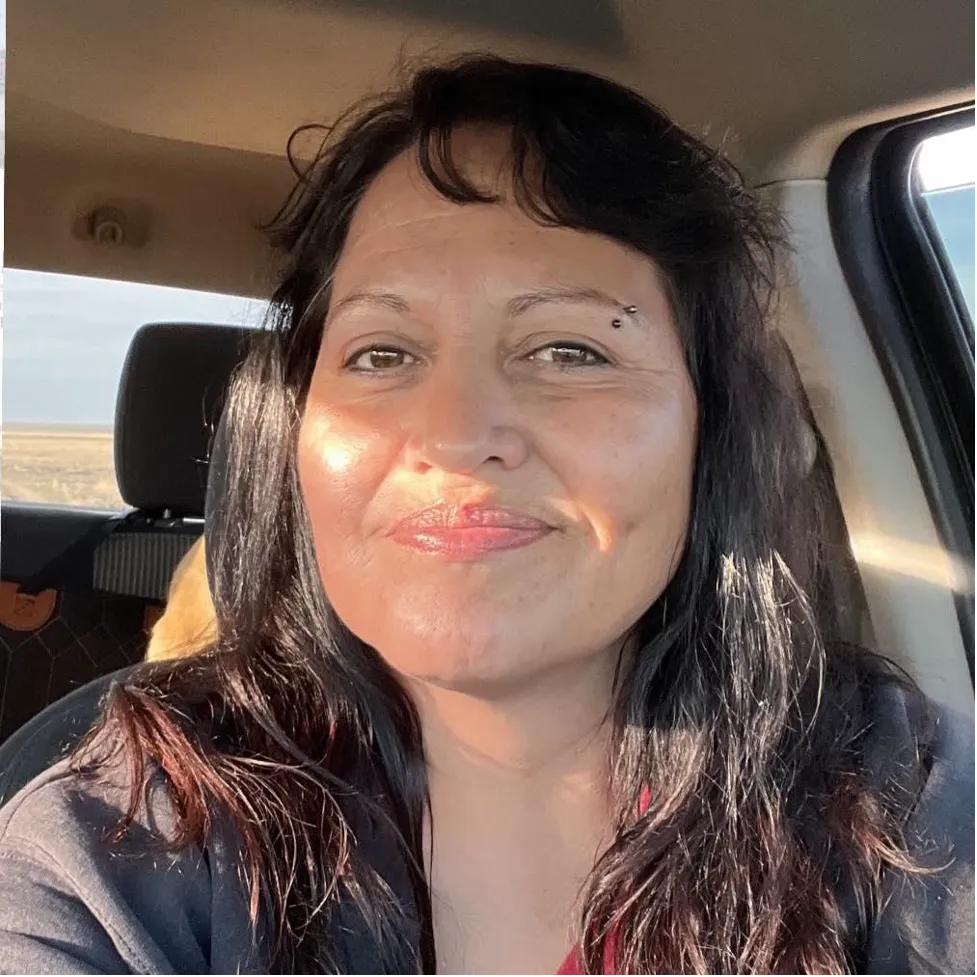
Lone Bear’s Last Night
There have been several articles about Lone Bear’s case over the past seven years. Van Horn said a recent article by KFGO Radio in Fargo provides answers to often-asked questions.
Lone Bear told one of her children she was going out that night and would be home later, the July 2023 article notes. She left the Sportsman’s Bar and got into a teal Chevy Silverado she had borrowed from a friend, James Hofhenke.
Warrants “to investigate the disappearance and possible homicide of Olivia Lone Bear” allowed the FBI to obtain location data from “pings” of electronic devices and texts sent by Lone Bear the night she went missing.
One text was to Hofhenke, saying, “We had a little bonfire, now we are going mudding. Wish me luck.”
“Mudding” is driving a vehicle through muddy areas like bogs, lakeshores and lakebeds. KFGO reported investigators could not find anyone who went to a bonfire or “mudding” with Lone Bear that night.
At 10:24 p.m. on Oct. 25, 2017, she sent another text to Hofhenke. It said only, “Good Bye.” At 10:37 p.m., Lone Bear sent a text to a former boyfriend, Adam Bangen. At 11:24 p.m., her Facebook page cover photo was changed. The last activity on her phone was to access Facebook at 11:38 p.m.
Search warrants reviewed by The Daily Muck show 41 items retrieved from the truck on Aug. 6, 2018. Lone Bear’s cell phone is not among the items listed. The FBI recovered five “electronic modules/components” from the truck on Sept. 10, 2018. On Feb. 6, 2019, the FBI received two electronic files “purported to be the contents” of Olivia Lone Bear’s Facebook account.
Anyone with information regarding her disappearance and possible homicide is encouraged to call 1-800-225-5324 (1-800-CALLFBI).
Race Shouldn’t Matter
These cases all involve Native Americans and are related to a national call to arms to address a burgeoning crisis of missing/murdered Indigenous Americans. If readers re-read this article, disregard the references to the victims’ ethnicity. What you will see then are simply examples of women, men, teenagers and children whose families grieve them and long for answers.
If you can provide any answers on one of these case, or any others, contact the investigating agencies.
There should be no difference in the response of law enforcement, the media and victim/family support agencies to a report of a missing Caucasian woman, a Native American woman or a victim of another ethnicity. Unfortunately, that is not always the case.

“You can see this difference in attitude in the coverage by the media, the rapid response by law enforcement to investigate, the implementation of proactive programs in the community, and the support for the families of victims,” Emily Sitting Bear told The Daily Muck.
Sitting Bear is the director of North Dakota’s Three Affiliated Tribes’ Emergency Operation Center and co-chaired the Tribal Homeland Security Advisory Council, a national organization.
Sitting Bear said all cases of missing and murdered individuals “deserve attention, regardless of race or tribal identity. The response should be the same every single time.”
Until statistics on missing/murdered Native Americans drop to a level proportionate to their share of the overall population, national attention will continue to focus on this issue.
When that day comes, articles will look only at the faces of those who have seemingly vanished or were murdered and take no special note of their race or ethnic heritage.
Subscribe to The Daily Muck for more articles and features on important issues of the day.
Discover More Muck
Online Bodybuilding Coach Exploited Minors, Collected Explicit Photos
Report Strahinja Nikolić | Feb 26, 2025

Cries of the Missing: The Tragedy of Missing/Murdered Indigenous People– ‘None of Us Are Safe Until All of Us Are Safe’
Feature Raymond L. Daye | Dec 11, 2024

Cult Senior Members Convicted of Human Trafficking
Report Strahinja Nikolić | Oct 10, 2024

Weekly Muck
Join the mission and subscribe to our newsletter. In exchange, we promise to fight for justice.
Weekly
Muck
Join the mission and subscribe to our newsletter. In exchange, we promise to fight for justice.




